1 December, 2001
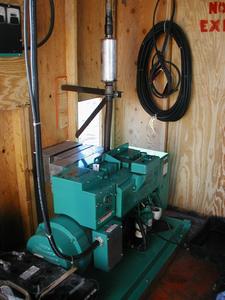
When we got back to Explorers Cove after a brief trip to McMurdo Station, we had to "wake up" camp. Dr. Bowser went immediately to the generator hut, which houses two diesel generators made by Onan. The 12KW and the 6KW generators are essential in providing electrical power to our field camp in New Harbor. Dr. Bowser must change the oil every 100 hours of operation. The fuel filter is changed twice each field season, but he checks daily for obvious problems like oil or fuel leaks. The generators power the computers, communication radios, microscopes, equipment, lights, and the microwave. (Yes, the kitchen in the Jamesway has a microwave, which has been invaluable in defrosting our food.) Electricity is also needed to recharge batteries (batteries rapidly run down in the extreme cold temperatures), as well as to power the refrigerator in the lab for all the science reagents requiring refrigeration.
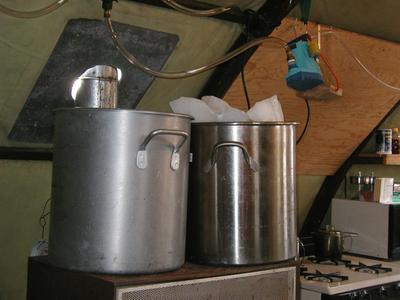
The Preway stoves were refueled to generate heat in the Jamesway huts. We immediately put chipped ice on the Preway to melt for wash water.

We restocked shelves with food items from McMurdo. We felt fortunate to have apples and oranges. I didn't expect any fresh fruit in Antarctica, but a limited amount had been flown in with other cargo from New Zealand.

The microwave defrosts meat and cooks frozen vegetables that are stored outside in coolers. The coolers are considered the "freezer area". We rely on "nature's refrigerator" to keep food cold inside the Jamesway kitchen. The milk (powdered) or leftover food from dinner is simply stored at floor level. The Jamesway is fairly warm since heat rises, although I usually wear fleece indoors.
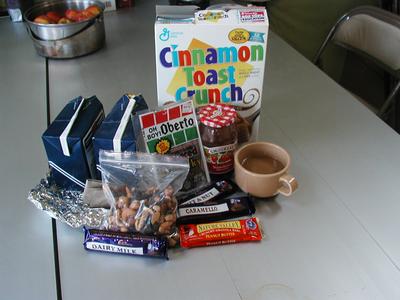
My favorite quick foods: candy bars, trail mix, granola bars, beef jerky, cereal, and hot coffee or tea. We drink a lot of fruit juice and water to keep from getting dehydrated. We were actually told to eat candy bars to stay warm. Despite eating candy bars every day, I have lost about 10 pounds. What a great diet!
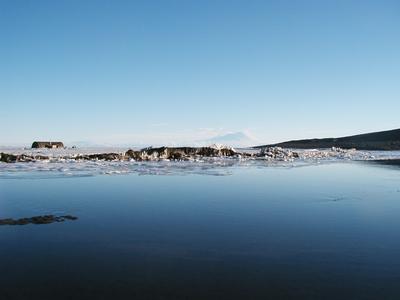
The moat has begun to melt over the past couple of days. The flooded moat has changed the appearance of Explorers Cove. It is quite beautiful looking toward the dive hut and Mt. Erebus beyond the flooded moat and transition zone (wall of ice pushed up where the land meets the sea).
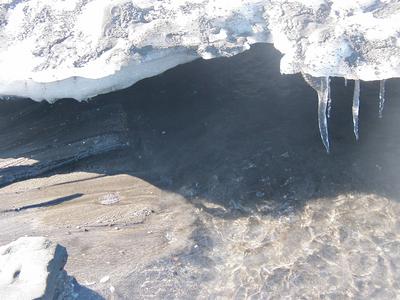
One of my favorite things is seeing the icicles near the fast running stream. I didn't expect to see moving water while I was here, so this was a wonderful surprise upon our return to Explorers Cove in New Harbor. (New Harbor is in McMurdo Sound, along the continental coastline, west of Ross Island. The U.S. McMurdo Research Station and Mt. Erebus are located on Ross Island.)
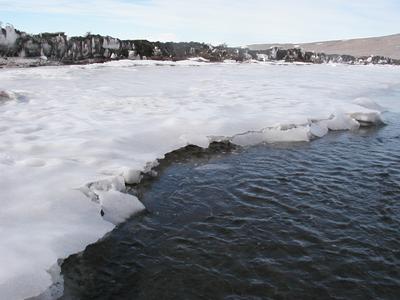
The ice breaking up around the stream adds to the beauty of this area.
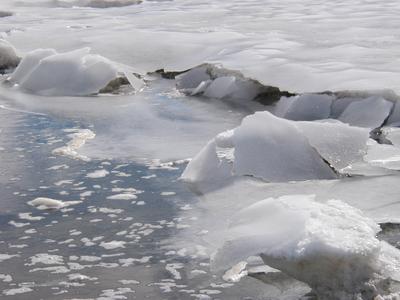
We wear the white bunny boots to carefully cross the stream at low tide. The ice cracks easily as we walk across the stream. It looks like a winter wonderland with the water moving through the ice. We must wear waders at high tide because the water comes around our knees.

When I checked the three hydrology sites in the marsh-like area, I noticed several changes. Site A has more melting, but the water is not as deep around the stake. The orange algae has more ridges, and seems to have spread out where the water goes back to the sea. Site B has more water flow around the middle of the hydrology (water) site, but the water around the stake is almost dried up. A lot of foam is around the stake at the edge of the water.
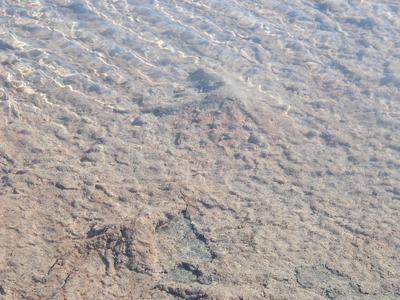
Close up of algal mat near site A
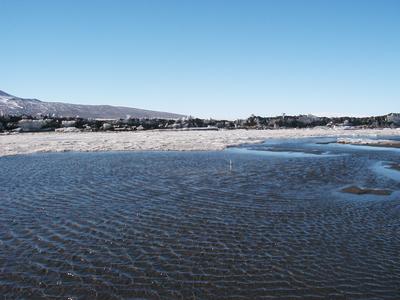
Site C shows no evidence of algae. The water looks about 6 inches deep around the stake. Initially the stake was near the edge of the water, but now the stake is beyond the middle of the pool.
Contact the TEA in the field at
.
If you cannot connect through your browser, copy the
TEA's e-mail address in the "To:" line of
your favorite e-mail package.
|
